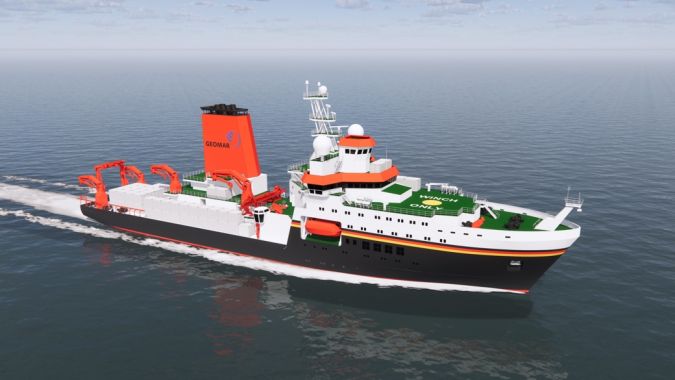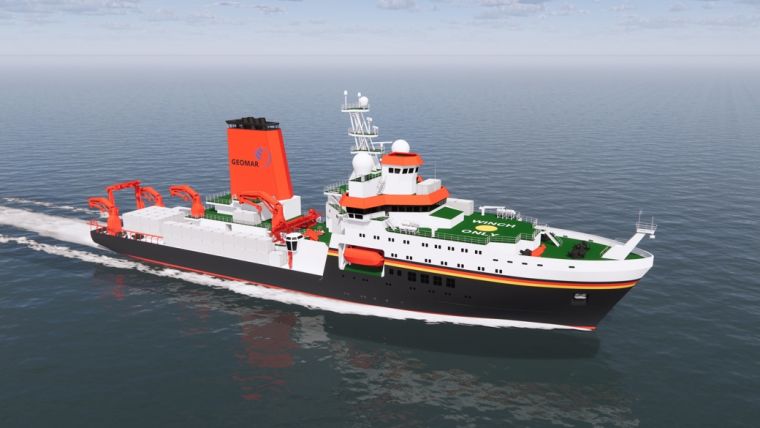Kongsberg to provide scientific equipment for Germany’s new ocean research vessel
Kongsberg will supply Germany’s forthcoming 125-metre ocean research vessel, Meteor IV, with a range of highly advanced scientific sensors and handling equipment. Scheduled for launch in 2026, Meteor IV is set to play a pivotal role in national and international marine science, with a specific focus on climate and environmental research. This innovative 10,000GT research vessel will accommodate a team of 35 scientists alongside a crew of 36.
Meteor IV is currently under construction at MeyerFassmer Spezialschiffbau (MFSB) for the German Federal Ministry of Education and Research, with anticipated delivery in 2026. It replaces the existing research vessels Meteor and Poseidon.
Ocean research for climate change
Stene Førsund, executive vice president, sales and marketing at Kongsberg Discovery, emphasized the importance of ocean research in addressing climate change and conservation issues, stating: “We need to build a better understanding of our changing climate and the effect it has on the marine environment to protect our oceans and future generations. Ocean research is now also recognized as critical to our understanding of climate change, as well as a host of conservation issues. A top priority of marine scientists is to map the entire seafloor by 2030, an enormous task that will require instruments and equipment with extremely precise calibration.”
Kongsberg Discovery will equip Meteor IV with the EM 124 and EM 712 multibeam echosounders, which are essential for seabed mapping at various depths. Additionally, the Seapath 380 with Motion Gyro Compass (MGC) R3 will be provided, featuring sensors that utilize GNSS signals and inertial measurements. These instruments, in combination with the EM series of echosounders, will create a highly accurate picture of the seabed.
To monitor ecosystems and marine life, Meteor IV will employ Kongsberg Discovery’s EK80, a high-precision scientific echosounder with acoustic doppler current profiler capability, capable of measuring the velocity of fish within a water column. The EK80 also measures speed and direction of currents in the water column, aiding researchers in comprehending the transport of organisms, nutrients and other biological and chemical constituents in the ocean.
Scientific handling system
Kongsberg Maritime will furnish Meteor IV with a comprehensive integrated scientific handling system, facilitating secure and efficient operations involving cables and ropes up to 12,000 metres in length. This scientific winch system includes two direct pull winches, two conventional twin drum traction winch systems, and a third traction winch system that incorporates Kongsberg Maritime’s field-proven cable traction control unit (CTCU) for superior performance with synthetic fibre rope. Overboard handling units, a stern A-frame, two handling beams, a corer handling system and cranes are also part of the delivery.
The control system, entirely developed and maintained in-house by Kongsberg Maritime, features the proprietary predictive active heave compensation (AHC) algorithm, ensuring precise winch system response synchronized with vessel motion, assisted by Kongsberg Discovery’s motion reference unit (MRU).
Meteor IV is designed for multifunctional and interdisciplinary research on a global scale, with a particular focus on the Atlantic Ocean. This new vessel will significantly contribute to national and international marine science, especially in the realms of climate and environmental research.















